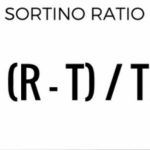KPI of the Day – Investment: # Treynor ratio

Definition
Measures a portfolio’s return earned in excess of what would be earned on a risk-free investment.
Purpose
To assess the return of investment considering systematic risk.
Recommendations
This measure is similar to # Sharpe ratio. The differences between these two indicators are: * # Sharpe ratio uses the standard deviation, # Treynor ratio uses beta; * # Sharpe ratio is more appropriate for well diversified portfolios, # Treynor ratio for individual assets; * For perfectly diversified portfolios, # Sharpe ratio and # Treynor ratio will give the same ranking, but different numbers. However, the ranking, not the number itself, is the most important.
The # Treynor ratio is used by investors and analysts to calculate and compare different investment opportunities. It does so by enabling deep understanding of each investment product assessed. Similar to the # Sharpe Ratio, it helps investors compare the financial performance of each investment or fund.
This indicator is useful for fund managers who are seeking to make better investment decision in view of long-term profitability. What makes the # Treynor ratio special is that it takes into consideration the sensitivity of an investment to movements in the market, as well as the risk associate with such movements.
The # Treynor ratio helps fund managers work with market instability so as to make sound financial decisions, and create a fundamentally more profitable investments in the long run. Therefore, both investors and finance managers are advised to employ this indicator upon assessing the performance of their investments.
Calculating this KPI is based on reasonable prediction of return and accurate estimation of risks.
Targets should be set considering portfolio characteristics. The higher the KPI, the better the risk return trade-off, indicating better performance of the investment.
Image source:

Tags: Investments, KPI




